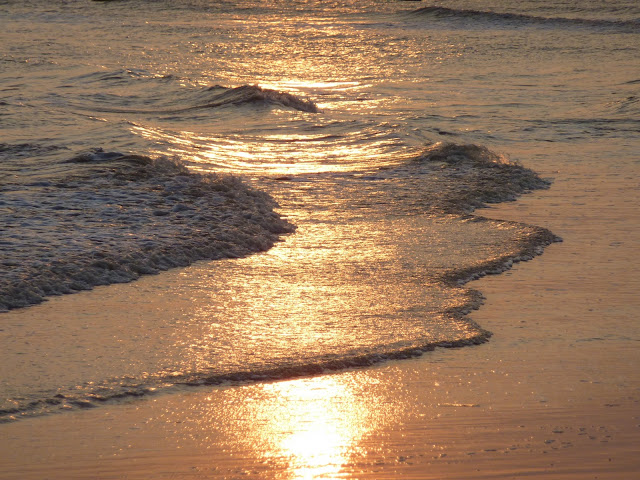 |
| Our first views of the feral horses, in the distance across the waters of the wetlands. |
The first herd, had the sun behind them, and we saw them silhouetted, and the scene reminded me of a watercolour painting.
Further along the track, there was another herd, much closer, with the light behind us, and it was so nice to see horses without saddles and stirrups, and the foals, oh they were the best!
 |
| A second bunch |
 |
| Observe the one in the centre right, with the white "naamam" and read on below. |
Mr Ramanan had this to say: "A decade back Point Calimere was known as a small fishing village where one could see only 30 odd fishing boats at the jetty. But now there is a lot of development and the road leading to the village is full of houses on either side of the road and up to the boating jetty.
The Point Calimere sanctuary situated on the eastern coast of India near the Park Straits, Tamilnadu, is the only place where one comes across wild horses in India. In those days the horses were branded on the back with the initials of the owner and according to the locals whenever their service was required they were caught and utilized for transporting salt from the saltpans!
Once the area was declared as the sanctuary, the owners had no right to retrieve the horses and hence they became free/wild horses. On our recent visit, the owners name was missing on the grazing horses, and so they have became really "wild", which is visible from their characteristic instincts."
Only the horse with the "namam", seems to still carry some branding on its side. This herd then is fairly new to the "wild".
 |
| Photo by Mr Ramanan - is she pregnant you think? |
According to Wikipedia, there is another feral horse population in Assam (they roam in the Dibru-Saikhowa national park), and they are descendants of army horses that escaped during the second World War!
 |
| Photo by Mr Ramanan - This was my favourite (and the youngest) foal I saw. |
















































